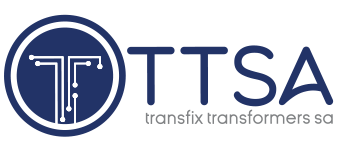Mineral Resources and Energy Minister Gwede Mantashe has pulled back from his statement that the release of the revised Integrated Resource Plan, which he has dubbed IRP 2023, is imminent, revealing during his Budget Vote on Tuesday that the draft will be presented to Cabinet only in the second quarter of this financial year. Government’s financial year runs from the start of April to the end of March, implying that the presentation to Cabinet will be made between July and September .
Posts
Economic development factors have not been included as qualifying criteria for South Africa’s inaugural Energy Storage Independent Power Producer Procurement Programme (ESIPPPP), through which the Department of Mineral Resources and Energy aims to procure 513 MW, or at least 2 052 MWh, of battery storage across five substation sites in the Northern Cape. The ESIPPPP request for proposals (RFP) was launched on March 7 and the bid submission date has been set for July 5, while Eskom has selected sites at the following substations:
The Presidential Climate Commission (PCC) is recommending that alternative investment models, including public-private partnerships (PPPs), be explored to expand and strengthen South Africa’s electricity grid “at speed and scale”, given the centrality of the grid to unlocking the energy transition, as well as the just components of the transition. However, it also stresses that there is no intention to privatise the National Transmission Company of South Africa (NTC), which is in the process of being established as a separate entity under Eskom Holdings.
Midtier Africa-focused gold producer Pan African Resources has signed an engineering, procurement and construction (EPC) agreement with renewable energy company Juwi Renewable Energies for an 8.87 MW solar photovoltaic (PV) facility at the Barberton Mines’ Fairview operation, in Mpumalanga. Pan African expects the solar facility will provide cost savings of R26-million in year one, before averaging R40-million a year in cost savings over the life of the plant.
The South African Petroleum Industry Association (Sapia) is not anticipating a domestic diesel supply crunch this winter as a result of a spike in generator-related demand, despite ongoing warnings of possible higher levels of loadshedding and the prospect of Eskom, businesses and even some households turning to the fuel in an effort to mitigate the impact of regular power cuts. Sapia executive director Avhapfani Tshifularo tells Engineering News that domestic diesel demand has remained relatively static over the past few years and that the average monthly consumption is about 1.1-billion litres currently.
The prospect of South Africa procuring electricity from powerships docked either in South Africa or in a neighbouring country has increased, with the Eskom board having approved three emergency procurement programmes that now only require the concurrence of the regulator before proceeding. The National Energy Regulator of South Africa (Nersa) will host hearings on May 19 into three determinations for emergency power, including: the 2 000 MW Load Shedding Reduction Programme (LSRP); a 1 000 MW scheme to secure additional cross-border electricity; and an 800 MW Emergency Generation Procurement Programme.
The drive towards reducing carbon footprints while remaining sustainable and profitable operationally and financially has become a priority for the manufacturing and industrial sectors. Within this context, operations and maintenance service provider AES has “become the go-to company for plants to optimise their energy generation and operations while diversifying energy resources, improving energy plant operations and reducing carbon footprints”, says AES director Dennis Williams.
Automation company Festo has further developed its compressed air technology to make its pneumatics sustainable, resource saving and energy efficient. While the production of tyres and wafers are seemingly very different, both products require the same technology, namely controlled pneumatics.
Local medium voltage (MV) ac motor and transformers manufacturer ArmCoil Afrika and engineering services company Schneider Electric have partnered on the provision of a skid mobile substation product line that will provide continuous power to a large mining conglomerate’s South African operations. The companies have already completed two skid substations (SKID 961 and SKID 979), with the third and fourth units currently in the manufacturing process. A SKID is a prefabricated substation, assembled on a self-supporting transformer, creating an easily transportable design that can be quickly energised.
President Cyril Ramaphosa has denied that there is any incoherence in his Cabinet regarding the Just Energy Transition Partnership (JETP) with developed countries that have agreed to extend $8.5-billion in concessional financing to support South Africa’s transition from coal to renewables. He was replying to a question posed by the Good Party’s Brett Heron on whether recent conflicting comments by various Cabinet Ministers on the future of South Africa’s coal plants was not at odds with South Africa’s JETP obligations.
INDUSTRY NEWS
- Growthpoint to provide renewable energy certificates for 26 Nedbank branches that are using its …November 7, 2025 - 4:04 pm
- Ramokgopa chides coal industry for its silence in energy debateNovember 7, 2025 - 3:04 pm
- Consultancy calls for creation of ‘Just Transition Worker Fund’ to address climate-linked …November 7, 2025 - 3:04 pm
WHERE TO FIND US
Address
9 Yellow Street
Botshabelo Industrial Area
Botshabelo, Free State
Call / Email Us
Tel: +27 (0) 61 956 6772
Email: info@transfix.co.za
